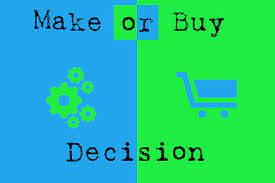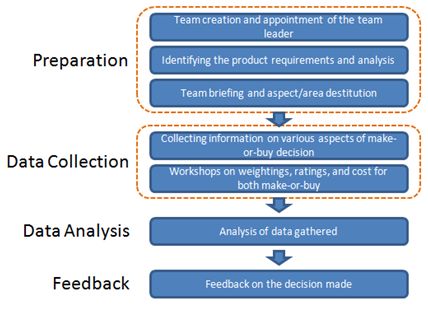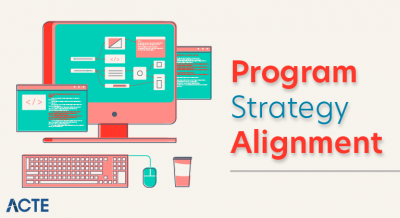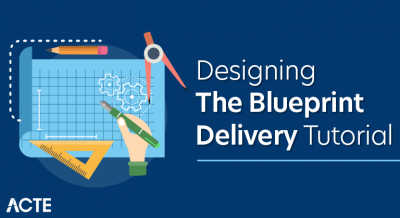
- Introduction to Make or Buy Decision
- Prologue to quantitative and subjective examination
- Factors leaning toward in-house fabricate
- Factors inclining toward buy from outside
- Costs for the make investigation
- Cost factors for the purchase investigation
- ARRIVE AT A MAKE OR BUY DECISION
- Four Numbers You Should Know
- Explanations behind Making
- The Process
- Conclusion
- To come to a settle on or-purchase choice, it is fundamental to completely break down, each of the costs related with item improvement notwithstanding costs related with purchasing the item.
- The appraisal ought to incorporate subjective and quantitative variables. It should likewise isolate important costs from unessential ones and think about just the previous.
- The review ought to likewise check out the accessibility of the item and its quality under every one of the two circumstances.
- Wish to incorporate plant tasks
- Need for direct command over assembling or potentially quality
- Cost contemplations (costs less to make the part)
- Worked on quality control
- No capable providers or potentially problematic providers
- Amount too little to even consider fascinating a provider
- Plan mystery is important to safeguard restrictive innovation
- Control of transportation, lead time, and warehousing costs
- Political, ecological, or social reasons
- Useful usage of abundance plant ability to help with retaining fixed upward (using existing inactive limit)
- Wish to keep up a steady labor force (in times when there are declining deals)
- More noteworthy assurance of consistent stockpile
- Absence of skill
- Little volume needs
- Cost angles (costs less to buy the thing)
- Wish to support a various source strategy
- Thing not important to the association’s technique
- Restricted offices for a production or lacking limit
- Brand inclination
- Stock and acquisition contemplations
- Direct work costs
- Steady stock conveying costs
- Steady capital costs
- Steady buying costs
- Steady plant working costs
- Gradual administrative costs
- Conveyed bought material costs
- Transportation costs
- Price tag of the part
- Gradual buying costs
- Getting and assessment costs
- Do the quantitative examination by contrasting the costs caused in every choice. The cost of buying items is the value paid to providers to buy them.
- Going against the norm, the expense of production incorporates both variable and fixed costs. For instance, a business requires 10 units of its thing in 10 successive periods.
- The organization can either purchase the units at $100 per unit or consume $1,000 to set up produce offices and $8 to fabricate every unit.
- As the business exhausts $10,000 to purchase the items and $9,000 to make similar amount of items, regarding make-or-purchase, the business would improve to produce the merchandise, based on just quantitative variables.
- Ponder every one of the subjective elements that might have a course on the choice to fabricate the items.
- This fuses generally appropriate elements that can’t be diminished to numbers like the nature of the business’ creation division and its insight.
- A model for this is that it very well might be conceivable that the business has no involvement with assembling a particular decent and its past involvement with assembling different products can’t be applied.
- Contemplate subjective elements that might have an orientation on the choice to purchase the items from outer providers.
- Such factors include: the nature of the providers’ administration, its trustworthiness and the nature of its merchandise.
- A model for this is that it is likely that the provider has extensive involvement with assembling the thing being thought of and the business might need to foster a drawn out relationship with a provider.
- Calculate the subjective angles the quantitative evaluation in order to finish it. A model for this for this situation is that:
- despite the fact that it is less expensive for the business to fabricate its items, there are grounds to accept that its merchandise would be of a lower grade than those it can purchase.
- Also, as the business wants to produce a drawn out relationship with its provider, it might want to buy its merchandise from that provider in order to begin the relationship.
- Show up at a last settle on or-purchase choice in the wake of thinking about both quantitative and subjective elements.
- This would rely upon the specific business and what it is doing as such as to make benefits.
- Going on with the above model, regardless of whether all things considered, the business might purchase preferred grade items over those it can make in-house, the nature of its merchandise/items might not have an orientation on its deals based on its plan of action and what it is placing available.
- The volume
- The proper expense of making
- Per-unit direct expense while making
- Per-unit cost while purchasing
- Presently, there are two equations that utilization the above numbers. They are ‘Cost to Buy’ and ‘Cost to Make’.
- The higher worth loses and the chief can proceed with the less exorbitant arrangement.
- Cost to Buy (CTB) = Volume x Per-unit cost when buying
- Cost to Make (CTM) = Fixed costs + (Per-unit direct cost x volume)
- Cost concerns
- Want to extend the assembling center
- Need of direct command over the item
- Protected innovation concerns
- Quality control concerns
- Provider inconsistency
- Absence of able providers
- Decrease of strategic expenses (delivering and so on)
- To keep a reinforcement source
- Political and climate reasons
- Authoritative pride
- Explanations behind Buying
- Absence of specialized insight
- Provider’s skill on the specialized regions and the area
- Cost contemplations
- Need of little volume
- Inadequate ability to create in-house
- Brand inclinations
- Key organizations
- Group creation and arrangement of the group chief
- Distinguishing the item prerequisites and examination
- Group preparation and viewpoint/region desperation
- Gathering data on different parts of settle on or-purchase choice
- Studios on weightings, appraisals, and cost for both make-or-purchase
- Examination of information accumulated
- Input on the choice made
- Settle on or-purchase choice is one of the vital methods for the board practice.Due to the worldwide reevaluating, settle on or-purchase independent direction has become well known and incessant.
- Since the assembling and administrations businesses have been broadened across the globe, there are various providers offering items and administrations for a small portion of the first cost.This has upgraded the worldwide item and administration markets by giving the shopper the inevitable benefit.
- Assuming you settle on a settle on or-purchase choice that can make a high effect, consistently utilize an interaction for doing that.Whenever such a cycle is followed, the exercises are straightforward and the choices are made for the wellbeing of the organization.
Introduction to Make or Buy Decision :-
Is it true or not that you are re-appropriating enough? This was one of the principle questions asked by the executives advisors during the reevaluating blast. Rethinking was seen as perhaps the most effective way of finishing things for a small part of the first expense.
Rethinking is firmly connected with settle on or purchase choice. The organizations settled on choices on what to make inside and what to purchase from outside to boost the net revenues.Therefore, the hierarchical capacities were isolated into portions and a portion of those capacities were moved to master organizations, who can do a similar occupation for considerably less expense.
Settle on or purchase choice is generally a legitimate idea in business. No association should endeavor to make something by their own, whenever they stand the chance to purchase something very similar for significantly less cost.This is the reason the greater part of the electronic things produced and programming frameworks created in the Asia, in the interest of the associations in the USA and Europe.
The settle on or-purchase choice is the activity of choosing fabricating a thing inside (or in-house) or getting it from an outer provider (otherwise called rethinking). Such choices are normally taken when a firm that has fabricated a section or item, or, in all likelihood impressively altered it, is disliking current providers, or has decreasing limit or shifting interest.
One more method for characterizing settle on or-purchase choice that is firmly connected with the primary definition is this: a choice to perform one of the exercises in the worth chain in-house, rather than buying remotely from a provider.A worth chain is the finished scope of undertakings – like plan, assembling, advertising and dissemination of an item/administration that organizations should finish to take a help or item from origination to their clients.
A few organizations deal with each of the errands in the worth chain from assembling unrefined components generally through to a definitive appropriation of the finished products and arrangement of after-deals administrations.A few different organizations are blissful just to coordinate on a more limited size by purchasing a great deal of the parts and materials that are expected for their completed items.
The standard suggests that organizations reevaluate everything merchandise that don’t can be categorized as one of the accompanying three classes:
1) the great is basic to the item’s prosperity including client insight of key item credits
2) the great falls well inside the company’s key capabilities, or inside those the organization ought to create to achieve likely arrangements, or
3) the thing calls for particular plan and assembling hardware or abilities.
FACTORS INFLUENCING THE DECISION
Prologue to quantitative and subjective examination :-
Quantitative viewpoints can be determined and analyzed while subjective angles call for abstract judgment and, oftentimes require numerous feelings. Moreover, a portion of the related variables can be measured with sureness while it is important to appraise different elements. The settle on or-purchase choice decisions for an exhaustive appraisal from all points.
Quantitative viewpoints are basically the gradual expenses originating from making or buying the part. Variables of this kind to check out may fuse things like accessibility of assembling offices, required assets and assembling limit. This may likewise consolidate variable and fixed costs that can be discovered either via assessment or with sureness.
Essentially, quantitative costs would join the expense of the great viable as the still up in the air by providers making the item available for purchase in the commercial center. Subjective elements to check out call for more emotional evaluation.
Instances of such factors incorporate command over part quality, the dependability and notoriety of the providers, the chance of changing the choice later on, the drawn out perspective concerning assembling or acquisition of the item, and the effect of the choice on clients and providers. As referenced before, recognizing these two sorts of costs is important to come to a settle on or-purchase choice.
Pertinent expenses for assembling the great are for the most part the costs that could be stayed away from by not assembling the item notwithstanding the open door cost coming about because of using creation offices to fabricate the great as against the following best elective usage of the assembling offices.
Important expenses for purchasing the item are largely the costs connecting with buying an item from providers. Superfluous expenses are the costs included regardless of whether the great is created inside or purchased remotely.
Factors leaning toward in-house fabricate :-
Factors inclining toward buy from outside :-
Providers’ specific skill and exploration are more than that of the purchaser
Costs for the make investigation :-
Cost factors for the purchase investigation :-

ARRIVE AT A MAKE OR BUY DECISION :-
Here’s one illustration of a course of how organizations can settle on a reasonable settle on or-purchase choice. Organizations should initially complete an evaluation of quantitative viewpoints prior to considering subjective angles to conclude their settle on or purchase choices.
Stage 1:
Stage 2:
Stage 3:
Stage 4:
Stage 5:
Here is a theoretical model for coming to a settle on or-purchase choice. A legitimate skateboard organization is currently producing the rock solid bearing that is used in its most enjoyed line of skateboards. The business’ bookkeeping area reports the accompanying costs for assembling 8000 units of the orientation inside consistently.
To show up at a settle on or-purchase choice, the center ought to, consistently, be on the applicable expenses (the ones that contrast between the other options). The costs that contrast between options include the costs that could be kept by purchasing the orientation from an outside provider.Assuming the costs that can be stayed away from by purchasing direction from the outer provider add up to under $19, the business should keep on assembling its orientation and reject the outside provider’s proposition.
Then again, assuming the costs that can be kept by purchasing the heading from the outside provider add up to more than $19, the outer provider’s deal ought to be acknowledged. You can utilize the arrangement underneath to deal with your pertinent/avoidable costs.
The difference of $40,000 supports continuing to make 8000 units Remember that deterioration of extraordinary gear is referenced as one of the costs for assembling the orientation inside.Attributable to the way that the hardware has effectively been purchased, this devaluation is a depressed cost and is, hence, not appropriate.
Assuming the gear could be used to make another item, this might be an applicable cost too. All things considered, we guess that the hardware has no rescue esteem and no other use. Moreover, the organization is saving a piece of its overall working costs, for direction. Any piece of the overall working costs that would be discarded assuming the orientation were purchased rather than made would be relevant in this examination.
Nonetheless, the overall working costs are potentially a typical cost to every one of the organization’s products delivered in the industrial facility and which would go on without changes regardless of whether the course were purchased from outside (isn’t significant). The variable expense (direct work, direct material and variable upward) can be forestalled in the event that the business doesn’t make the bearing.
This is on the grounds that at $40,000, it costs less to produce the course inside than to buy them from an outer provider. All in all, it could be said, the settle on or-purchase choice is a vital choice regarding by and large creation methodology and the potential ramifications for resource levels, work levels and key capabilities.
In any case, as a general rule, there are innumerable complexities related with the connection between different sorts of pay and expenses. Intricacy is especially clear in make-or-purchase. Thinking about these perspectives, the settle on or-purchase choice ought to be weighed with absolute attention to detail.
Four Numbers You Should Know :-
Whenever you should settle on a settle on or-purchase choice, there are four numbers you should know about. Your choice will be founded on the upsides of these four numbers. We should examine the numbers now. They are very plain as day.
Explanations behind Making :-
There are number of reasons an organization would consider with regards to making in-house. Following are a couple:
Volume too little to even think about getting a provider drawn in:
Following are a portion of the reasons organizations might consider with regards to purchasing from a provider:
The Process :-
The settle on or purchase choice can be in many scales. Assuming the choice is little in nature and lessly affects the business, then, at that point, even one individual can settle on the choice.
The individual can think about the advantages and disadvantages among making and purchasing lastly show up at a choice. With regards to bigger and high effect choices, generally associations keep a guideline technique to show up at a choice.

This technique can be isolated into four fundamental stages as underneath.
1. Arrangement:
2. Information Collection:
3. Information Analysis:
4. Input:
By following the above organized cycle, the association can settle on an educated choice on make-or-purchase. Albeit this is a standard interaction for settling eager for advancement or-purchase choice, the associations can have their own assortments.






